Key takeaways:
- Understand the diverse assessment tools for dyslexia, focusing on the specific needs of individuals and the environment in which assessments take place.
- Choose tools based on their credibility, research backing, and relevance to the individual’s developmental stage to ensure effective assessments.
- Utilize ongoing training, adaptability, and student feedback to enhance the effectiveness of assessment tools in fostering a supportive learning environment.
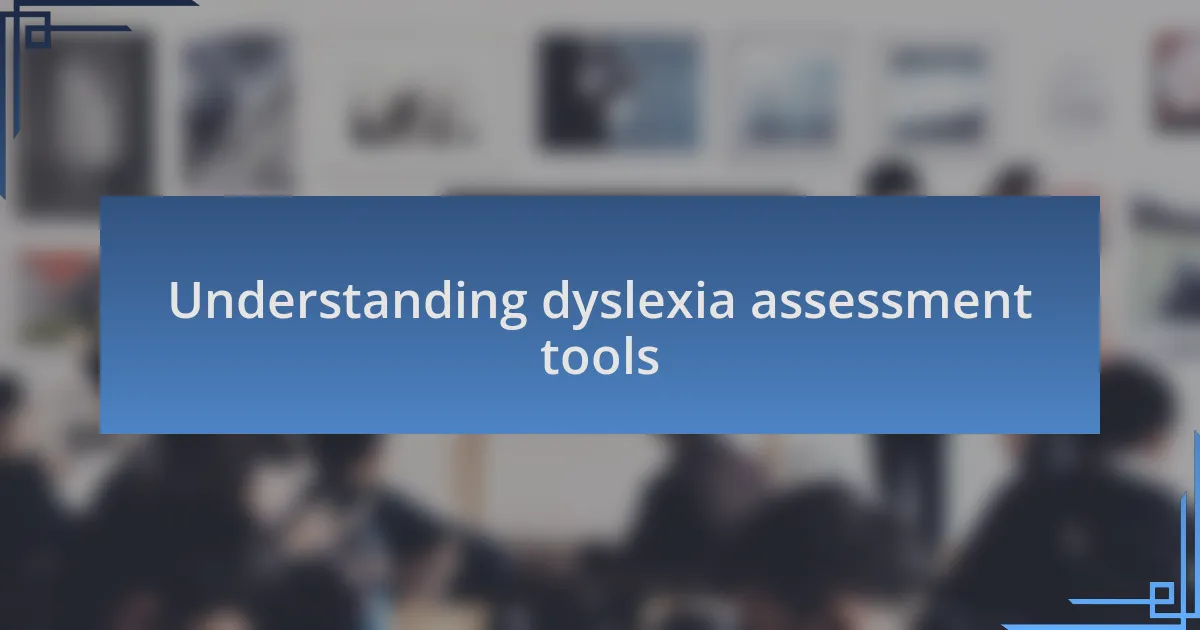
Understanding dyslexia assessment tools
Understanding dyslexia assessment tools involves recognizing the various methods available to evaluate reading and language processing abilities. I remember the first time I explored these tools; I was overwhelmed by the array of options. Each tool serves a unique purpose, and it’s crucial to understand what you need to assess.
For instance, some assessments focus on phonological awareness, which is the ability to recognize and manipulate sounds in words. I once worked with a child whose struggles with phonics made it clear how vital these assessments can be. Have you ever noticed how specific challenges can surface in different individuals? The right tool can uncover those hidden struggles.
Moreover, assessment tools can range from informal observations to standardized tests. My experience has shown that combining various approaches often yields the most comprehensive understanding of a learner’s needs. It’s like putting together a puzzle—why settle for only a few pieces when you can have the entire picture?

Factors to consider in selection
When selecting an assessment tool, it’s essential to consider the specific needs of the individual being assessed. I remember working with a young adult who had considerable difficulty with reading comprehension. It struck me that while some tools excelled in measuring phonics, they didn’t address her challenges with understanding context. This taught me firsthand that the tool you choose should align with the unique profile of the individual.
Another factor to keep in mind is the environment in which the assessment will take place. I’ve had experiences where a child struggled due to anxiety in a testing setting, resulting in their true abilities remaining hidden. Wouldn’t it be better to consider tools that allow for a more comfortable atmosphere, maybe even incorporating informal assessments that can be conducted in a familiar space?
Lastly, think about the reliability and validity of the assessment tool. These terms might sound technical, but to me, they’re about ensuring that the tool consistently measures what it claims to measure. A tool I once used promised to identify learning disabilities, but it fell short. This experience underscored how vital it is to choose an assessment that is backed by research and proven to be effective. Have you had a similar experience that made you rethink your options?
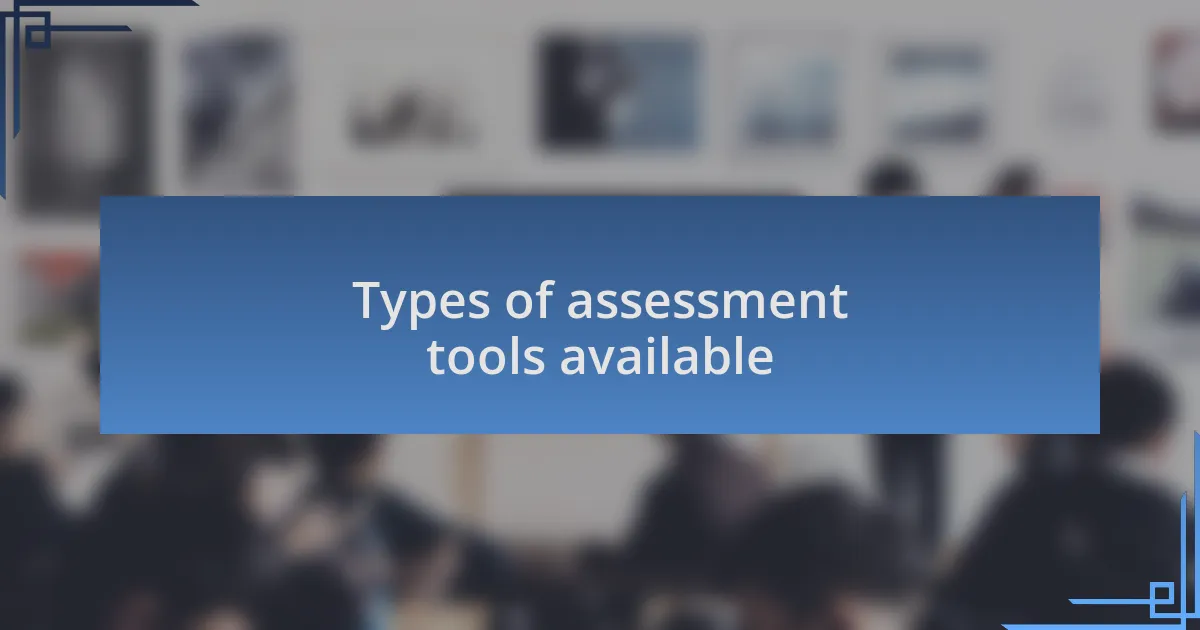
Types of assessment tools available
When diving into the types of assessment tools available, I often think about the broad spectrum from standardized tests to more dynamic, informal assessments. I distinctly recall a session where we employed a dynamic assessment tool, which focused on measuring a student’s learning potential rather than just their current abilities. It was fascinating to see how this approach not only captured their strengths but also illuminated areas in need of support, transforming how I viewed their learning journey.
Standardized assessments are structured and often used for initial evaluations. I remember administering one of these tests and feeling a mix of hope and concern, as the rigid format seemed to stifle the student’s true potential. Have you ever noticed how some children can perform brilliantly in everyday situations but struggle in a formal test environment? It’s these contrasting dynamics that drive home the importance of choosing the right tools for each learner.
On the other hand, informal assessments provide a more flexible and holistic view of a learner’s abilities. I once focused entirely on observations during a reading activity, taking notes on engagement and comprehension rather than strict scores. This felt so much more authentic, as it revealed the child’s genuine interest and understanding. Isn’t it interesting how sometimes, stepping away from traditional methods can yield richer insights?
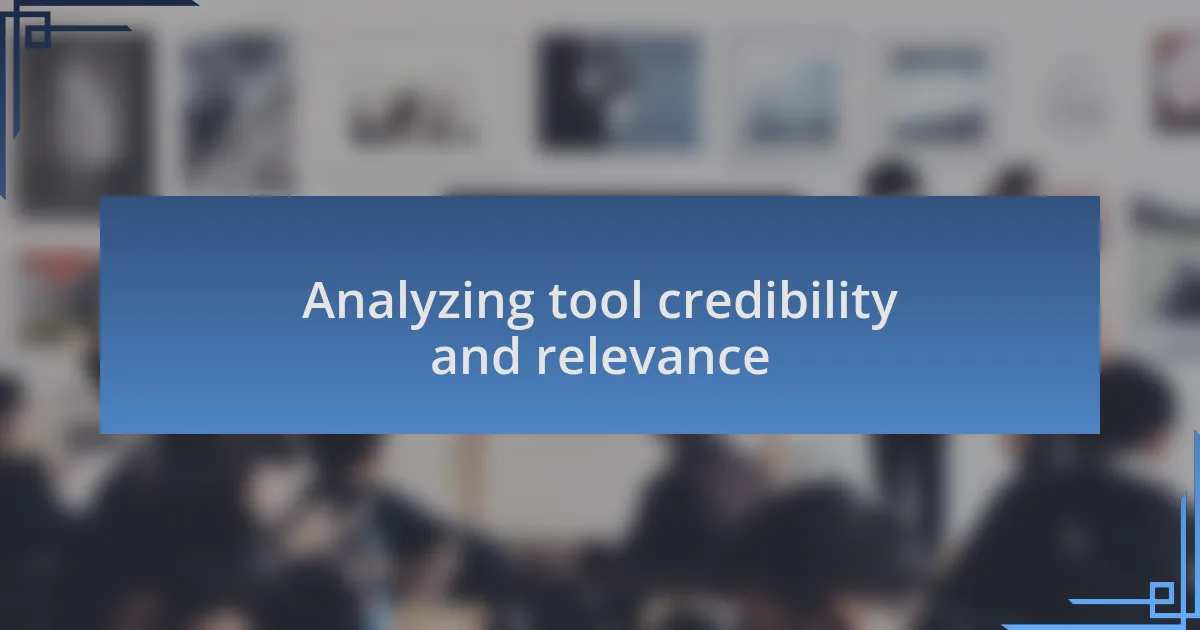
Analyzing tool credibility and relevance
When analyzing the credibility of an assessment tool, I often lean on a few key indicators, such as its research backing and testimonials from reputable educators. For instance, I recall coming across a tool recommended by a respected colleague. Their positive experiences gave me the confidence to explore its features, ultimately leading me to adopt it in my practice. Isn’t it reassuring when others pave the way by sharing their insights?
Relevance is another critical factor. I once used a standardized assessment designed for adults to evaluate a child, and it became clear that the tool simply didn’t align with their developmental stage. The result? Frustration for both of us, as the child couldn’t relate to the context of the questions. Have you ever used a tool that felt more like a mismatch than a match? Understanding the specific needs of my learners has made me more discerning in my selection process.
I find that thorough reviews are invaluable in this journey. While researching, I stumbled upon a blog post detailing a lesser-known tool that ended up transforming one educator’s approach to dyslexia. The real-life success stories resonated with me and added a layer of trust. When you read about how a tool has positively impacted others, doesn’t it spark your curiosity to explore its potential in your own work?
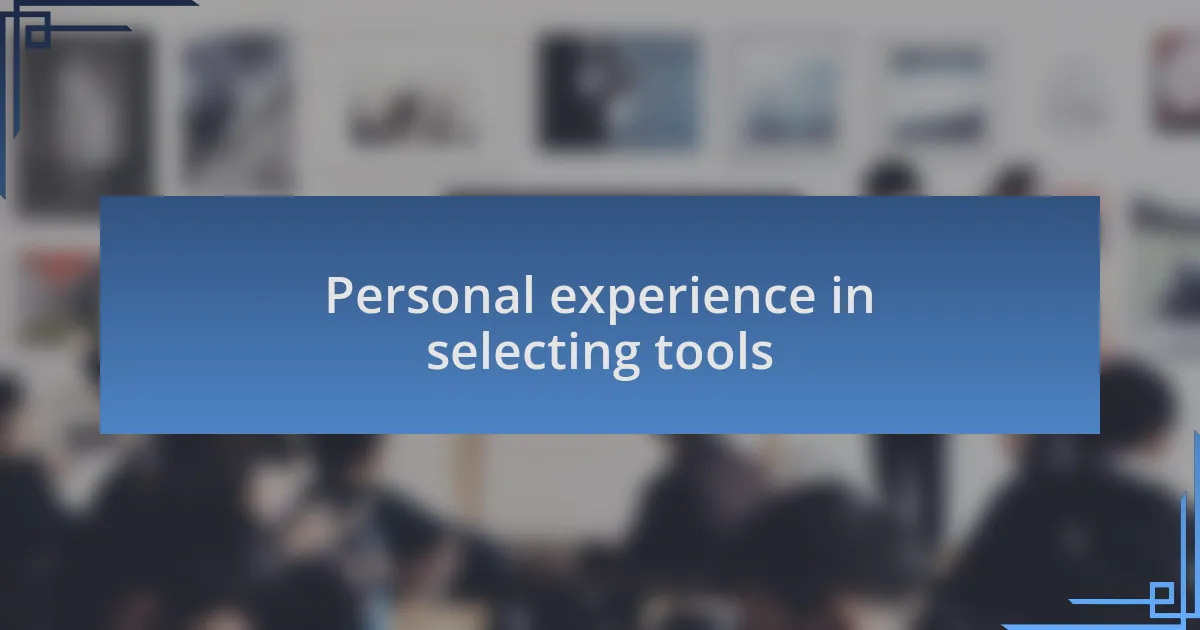
Personal experience in selecting tools
Selecting the right assessment tool can be a journey filled with trial and error. I vividly remember the early days of my practice when I was drawn to a flashy tool that promised results. After giving it a shot, I quickly realized that its approach didn’t resonate with my students at all. It was disappointing, but it taught me the invaluable lesson of prioritizing user experience over marketing hype.
One day, while sifting through various options, I decided to engage with a local dyslexia support group. Hearing firsthand accounts from other educators about their favorite tools was eye-opening. I was struck by one particular story about an interactive assessment that encouraged student engagement and curiosity. It reminded me of the power of community in guiding our decisions; have you ever felt inspired by collective experiences in your field?
Reflecting on my journey, I’ve learned to trust my instincts alongside the data. I once hesitated between two tools; both appeared effective but served slightly different needs. After some soul-searching, I went with the one that felt right in my gut. The moment I started using it, I witnessed a remarkable improvement in my students’ progress. Isn’t it fascinating how our intuition can sometimes guide us to the best choices?
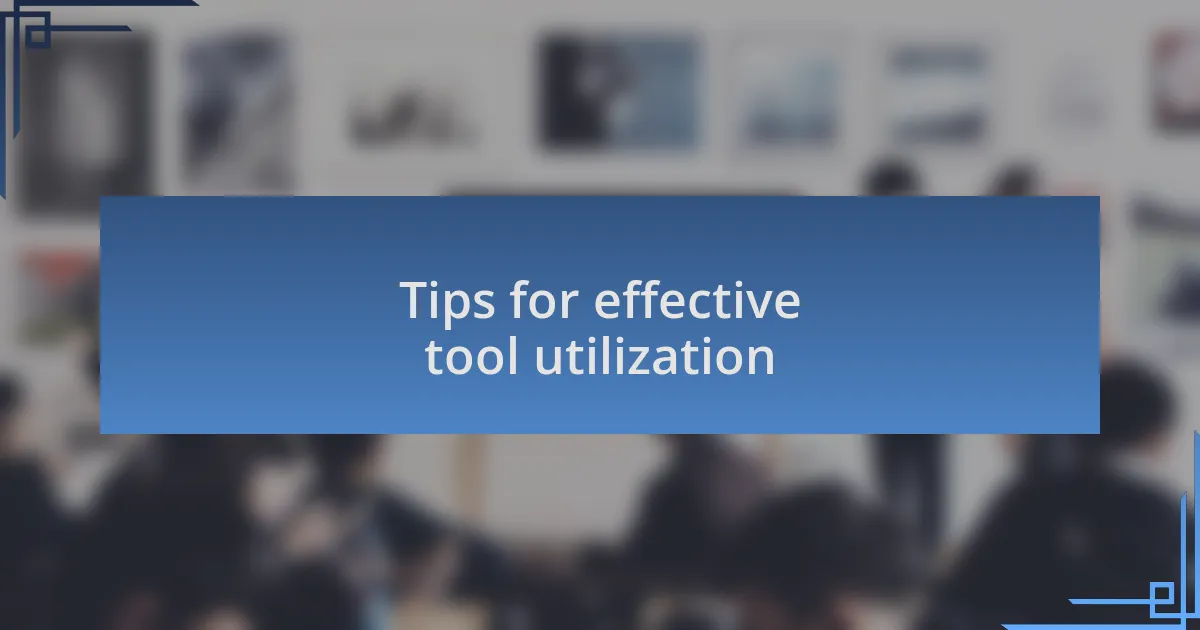
Tips for effective tool utilization
When utilizing assessment tools, it’s crucial to ensure they align with your specific teaching approach and students’ needs. I recall a time I had to modify a tool to suit the learning styles of my students better. Making adjustments not only enriched their experience but also fostered deeper engagement. Have you ever noticed how personalization can transform a seemingly rigid tool into something much more effective and nurturing?
Another vital aspect to consider is ongoing training and support for both you and your students. I remember attending workshops that unveiled hidden features of a tool I was already using. These sessions enhanced not only my understanding but also my students’ reactions to the assessments. Isn’t it interesting how a little bit of extra knowledge can change everything?
Finally, consistently gather feedback to refine your approach. I often set aside time after assessments to discuss with my students what they enjoyed and what didn’t work for them. It created a collaborative environment that valued their voices in the learning process. Have you tried leveraging student feedback to evolve your tool usage? I can assure you, it creates ownership of the learning journey that’s truly invaluable.